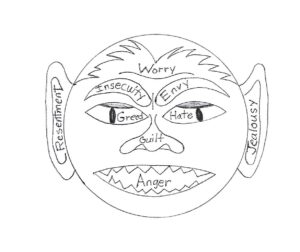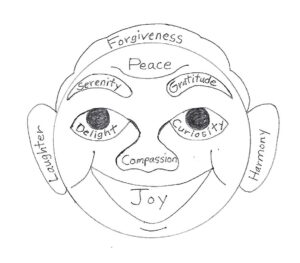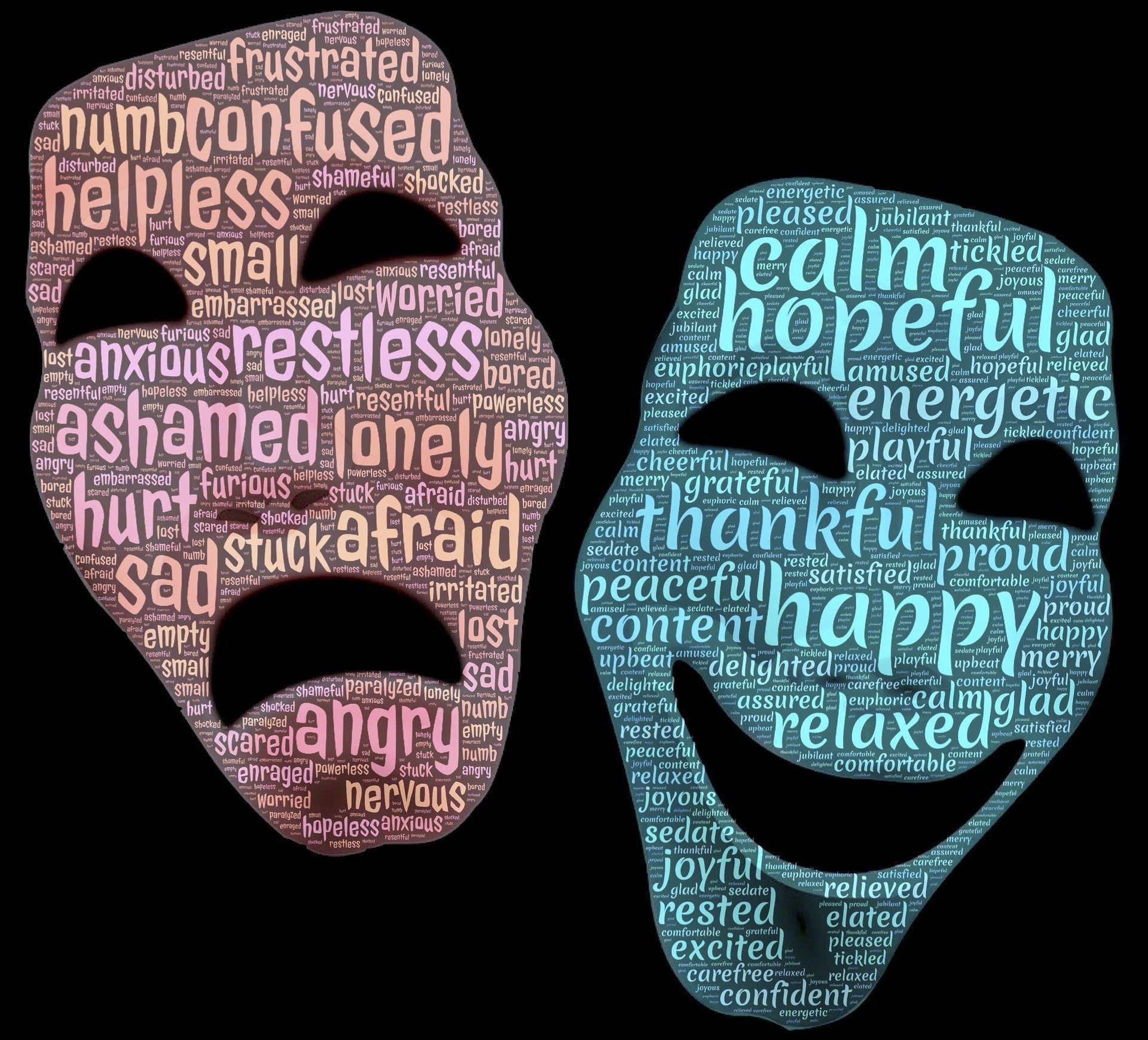Do you realize that you have two faces? Yes, there are only two faces you have to show to the world. The impacts of each face on the well-being and development of the people around you are entirely different. With one face, you bring harmony, security, intimacy, nourishment, and inspiration. With the other face, you bring conflict, insecurity, distance, starvation, and disillusionment. What are these two faces you wear?
The Face of Fear
Below is the graphic of your face of fear.

Is this the face you would choose to present to your spouse, children, family, friends, coworkers, employees, and others in your social sphere? If your answer is no, please examine the face of fearlessness.
The Face of Fearlessness
Below is the graphic of your face of fearlessness.

Is this the face you want to put forth for everyone you encounter? If your answer is yes, there is a process you can begin in order to make this the face you wear most of the time.
Becoming Fearless
The first step in becoming a fearless person is identifying all of your fears. (I am talking about psychological, social, existential fears, not the instinctive fears we have for our physical survival.) Many of your fears are readily recognizable such as a fear of heights or dogs or spiders or pain. These fears are more easily dealt with, and there are many simple and effective psychological strategies for overcoming them. The fears that you are perhaps dimly aware of or totally unaware of are the more powerful ones that determine what face you wear. Uncovering and releasing these fears is where the real action is.
Your Built-in Signaling System
A fundamental, undisputable psychological truth is this, “Only your mind can produce fear.” Therefore, the first step in identifying your unknown fears is to pay much more attention to your thoughts, because all fear-based emotions are energized by your thoughts. You must begin to fully appreciate the power of your mind. A Course in Miracles says this about your mind.
Few appreciate the real power of the mind, and no one remains fully aware of it all the time. However, if you hope to spare yourself from fear there are some things you must realize, and realize fully. The mind is very powerful, and never loses its creative force. It never sleeps. Every instant it is creating. It is hard to recognize that thought and belief combine into a power surge that can literally move mountains. . . There are no idle thoughts. All thinking produces form at some level. –Text, Chapter 2, VI, paragraph 9, 3-8, 13-14.
When I worked with emotionally distraught clients, I first gave them time to express their feelings but after a while, I turned their attention to listening to the thoughts that energized them. This stepping back and deliberately listening to their thoughts immediately lowered the intensity of the emotions and allowed them to be more centered. Behind every disturbing emotion are specific thoughts, so using your emotions as a signaling system to identify your thoughts makes emotions useful rather than disruptive.
The next step was to help them identify the origin for their thoughts which may have seemed to be caused by some outside event, person, or circumstance, but with further exploration, it became clear the real activating factor was always some strongly held belief or beliefs of which they were unaware. Their belief(s) determined their thoughts about the event or circumstance, which then shaped their perception or interpretation which energized the disturbing emotions. (For an example of this psychotherapeutic process go to the article “Simplicity is Power: The Tattoo.”) Therefore, in order to be permanently free of the fear, a change had to occur at the systemic level of belief. Once an invalid (fear-producing) belief was completely discarded, the fear or fears could no longer be generated by events or circumstances.
Your Greatest Gift to the World
The greatest gift you can give to the world is to become a fearless person. Wearing the face of fearlessness elevates, inspires, harmonizes, enriches, reassures, and heals others. In order to make any psychological change like this, you need strong intention, awareness, knowledge, and conscious, persistent practice. You can do this on your own, but if you want an ally or guide, do not hesitate to seek out a psychotherapist, life coach, mentor, spiritual guide, or other capable, competent resource person. Whoever you choose, just make sure he or she shares your purpose, works within a cognitive/behavioral framework, emphasizes growth, and is a mostly fearless person. And someday, I hope to see your fearless face!
Interested in learning more? Explore our other category posts: Fear, Fearful, Fearless.

I really needed to read this, perfect timing!! Now to actually do the work.😍
I am watching a program on television now about bias that people have. It sounds like they might be one and the same in a lot of ways. So strange that your article came up while I am watching it. Difficult to be a fearless person all the time, things get in the way.
I will be working on my fearless face! I’m confident that my fearless face will also come with fewer wrinkles.
Alas, the conventional wisdom that it takes 43 facial muscles to frown and only 17 to smile is questioned by a plastic surgeon who studied a substantial number of cadavers and he concluded a frown required 11 facial muscles and a smile required 12. Smiling is the secret youth in other ways though, so keep smiling!